07-04-2013, 08:54 AM
0
As Joan posted in her Razorbacks thread, we brought my upright bass with its neck detached and in serious need of some work, to Kenny, the Razorbacks founder.
First the back story as to how I acquired this gem.
About five years ago, I was doing some work for an old German electrician that had wired his home for a low voltage fire alarm system. Being a line voltage electrician, he could not get the alarm to work, so I stopped by to help get the system functioning properly.
While working in one of the attic spaces, I noticed an upright bass with the neck detached, finish faded and with a lot of dings and scratches.
I was going to charge the fellow $2-300 cash dollars, but thought this might be a sweet trade. I promptly called Joan to get her thoughts, and she obviously told me to go for it. So I asked the electrician, whose name happens to be Wolfgang, if a trade would be acceptable. He said he hadn't played in ages and the trade would be good. He then proceeded to give me a little history of the instrument.
It turns out that Wolfgang was regular German Army during WWII, and emigrated to the US shortly after we kicked their butts. He had the bass prior to the war and brought it with him when he emigrated.
So, that's how I ended up owning this guitar that I had every intention of restoring myself, but after talking to a lot of professionals, decided not to undertake this feat.
Now for the photos.
This is the bass before I turned it over to Kenny. Unfortunately, no pics of the neck are available.
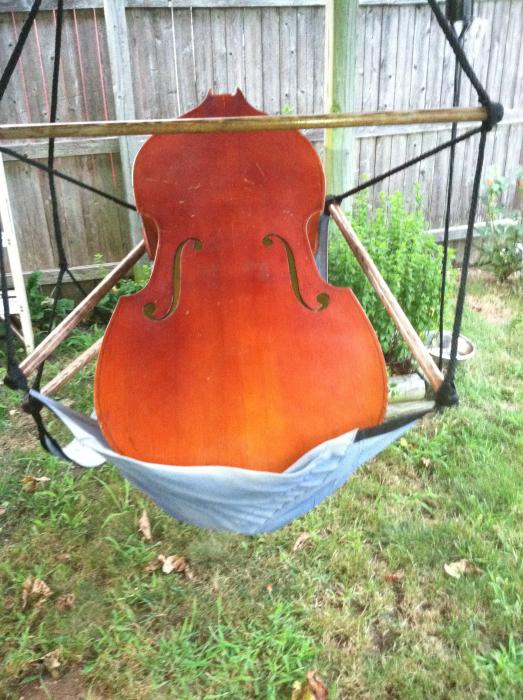
This is the unusual grain of the fingerboard after the black paint was removed.
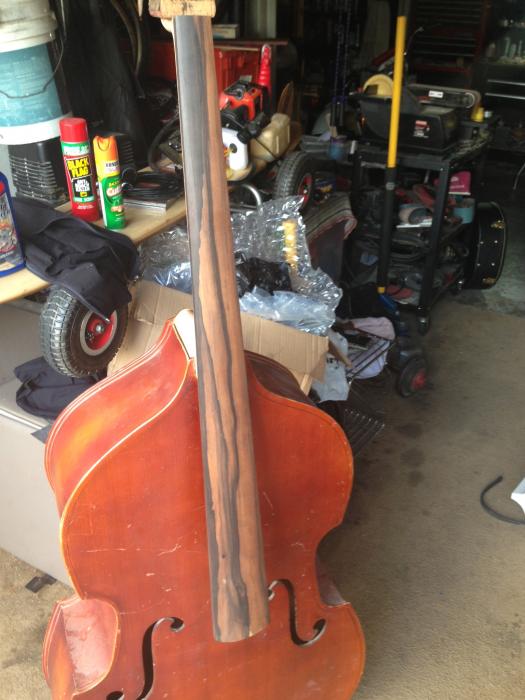
The stripping process begins.
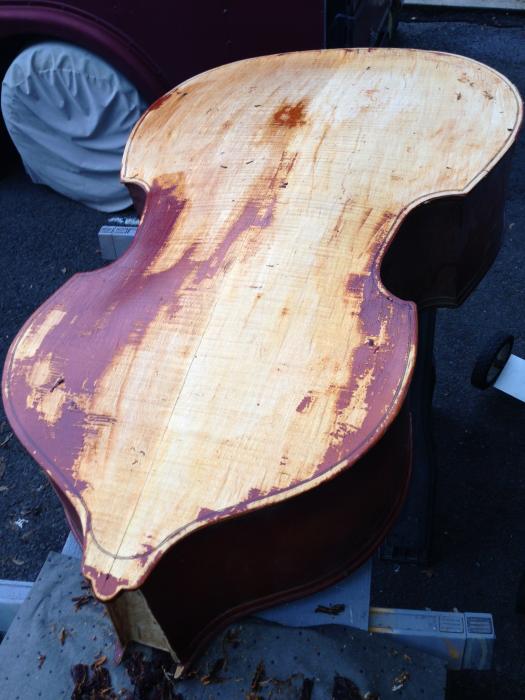

The neck locked in and adhesive drying.


The old tarnished tuners as good as new!

First coat of stain.
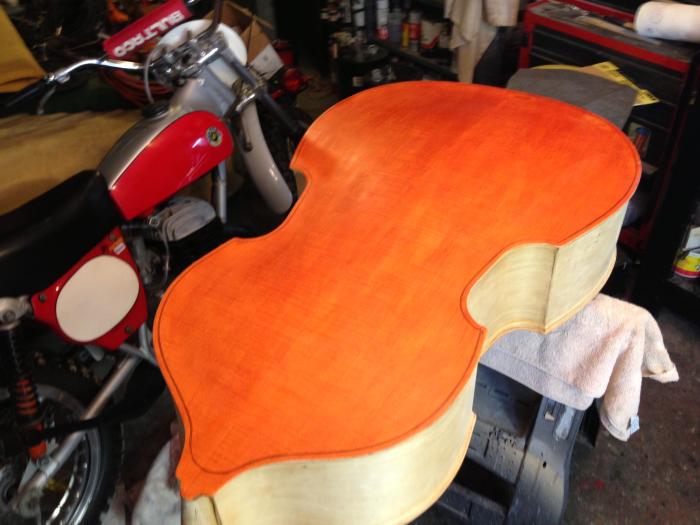
The color is called Gretsch Orange. That's a '55 on top.
If you click on the picture and click on the picture that pops up to enlarge it, you can really see the nice wood grain which should really pop when the finish is applied.
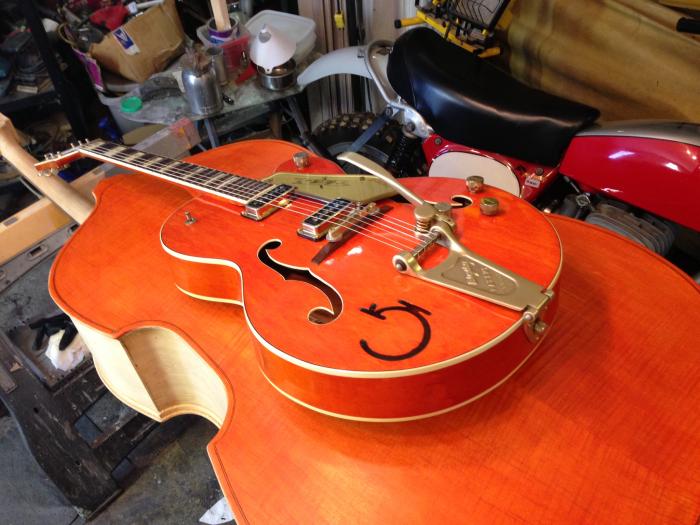
Originally we were just going to go with a hot rod design (black with flames), but after stripping the bass down and seeing all the unique wood grain, Kenny forbade it and opted for a more traditional staining, only with a much cooler color.
Still a lot of work to go, but I am so excited about this.
First the back story as to how I acquired this gem.
About five years ago, I was doing some work for an old German electrician that had wired his home for a low voltage fire alarm system. Being a line voltage electrician, he could not get the alarm to work, so I stopped by to help get the system functioning properly.
While working in one of the attic spaces, I noticed an upright bass with the neck detached, finish faded and with a lot of dings and scratches.
I was going to charge the fellow $2-300 cash dollars, but thought this might be a sweet trade. I promptly called Joan to get her thoughts, and she obviously told me to go for it. So I asked the electrician, whose name happens to be Wolfgang, if a trade would be acceptable. He said he hadn't played in ages and the trade would be good. He then proceeded to give me a little history of the instrument.
It turns out that Wolfgang was regular German Army during WWII, and emigrated to the US shortly after we kicked their butts. He had the bass prior to the war and brought it with him when he emigrated.
So, that's how I ended up owning this guitar that I had every intention of restoring myself, but after talking to a lot of professionals, decided not to undertake this feat.
Now for the photos.
This is the bass before I turned it over to Kenny. Unfortunately, no pics of the neck are available.
This is the unusual grain of the fingerboard after the black paint was removed.
The stripping process begins.
The neck locked in and adhesive drying.
The old tarnished tuners as good as new!
First coat of stain.
The color is called Gretsch Orange. That's a '55 on top.
If you click on the picture and click on the picture that pops up to enlarge it, you can really see the nice wood grain which should really pop when the finish is applied.
Originally we were just going to go with a hot rod design (black with flames), but after stripping the bass down and seeing all the unique wood grain, Kenny forbade it and opted for a more traditional staining, only with a much cooler color.
Still a lot of work to go, but I am so excited about this.






























![[Image: alcatraz-prison-picture2-1.jpg]](http://i17.photobucket.com/albums/b78/lktraz/Sigs%20and%20Avs/alcatraz-prison-picture2-1.jpg)
![[Image: dont_care_offended.gif]](http://i17.photobucket.com/albums/b78/lktraz/Sigs%20and%20Avs/2012%20Bumper%20stickers/dont_care_offended.gif)






![[Image: PancakeBunny.jpg]](http://www.twitchinkitten.com/myphotos/PancakeBunny.jpg)



